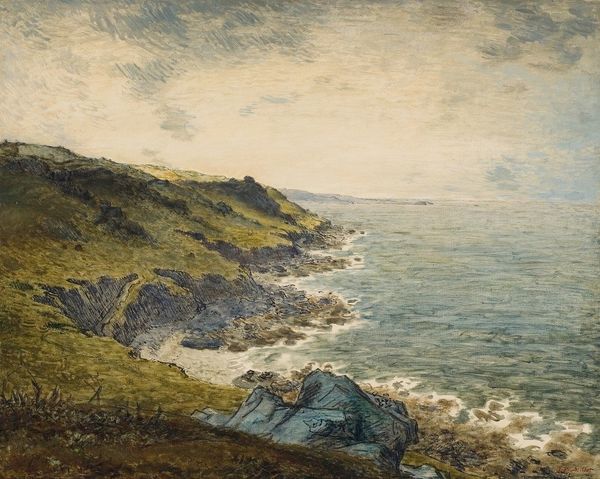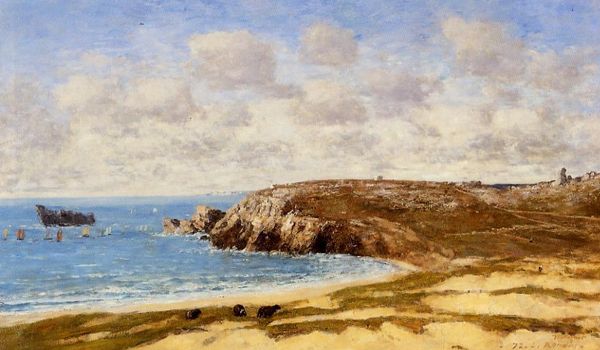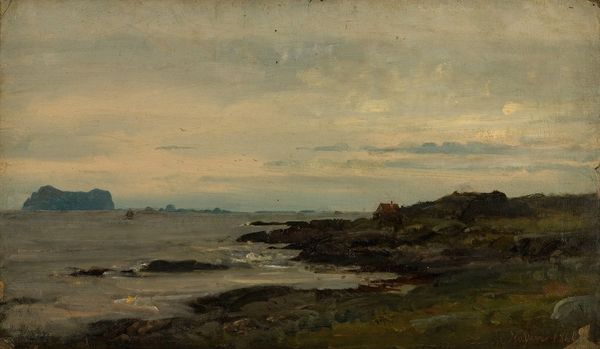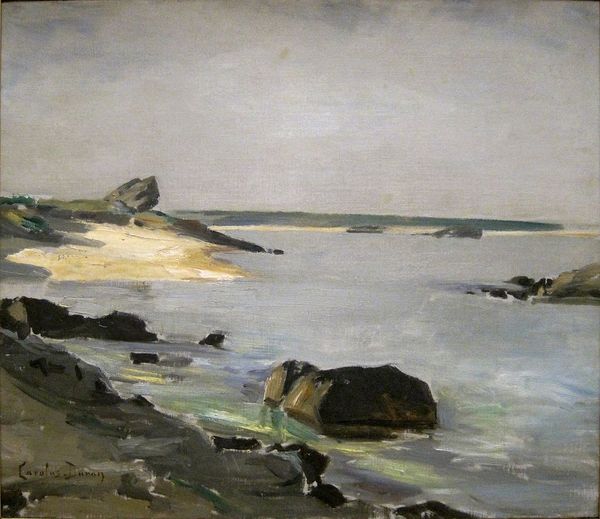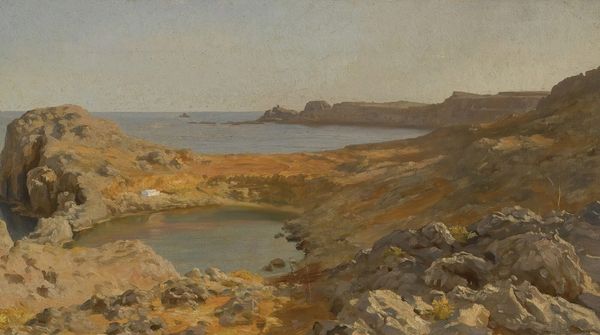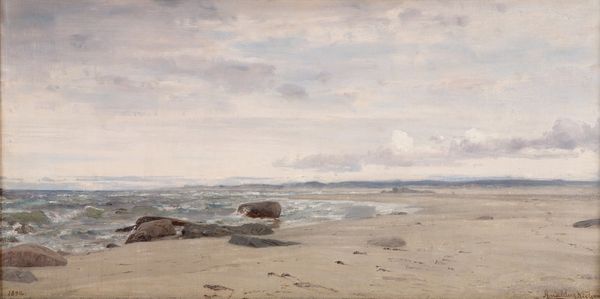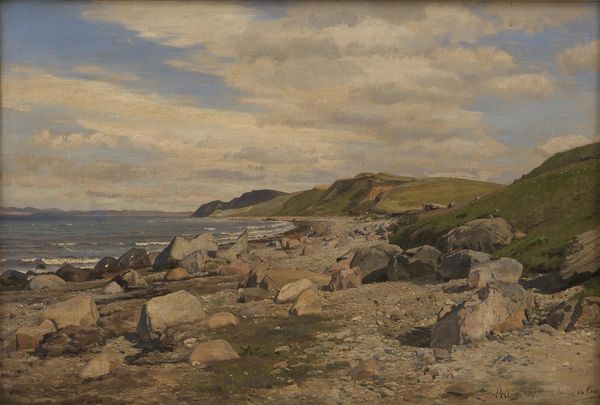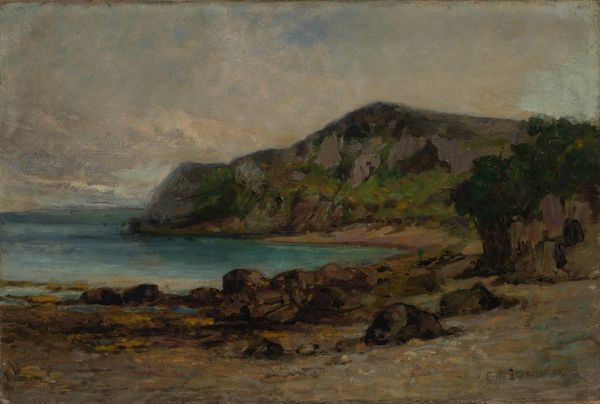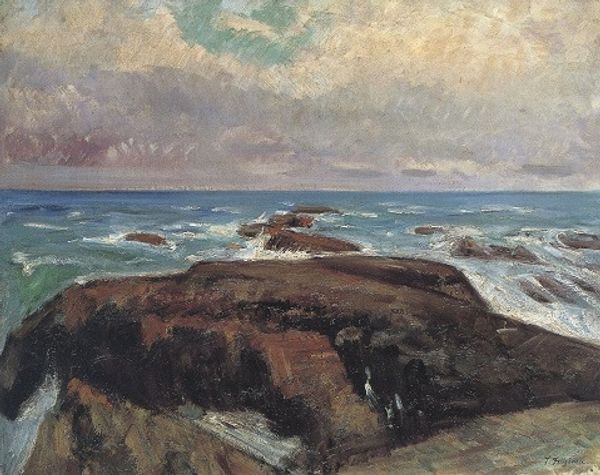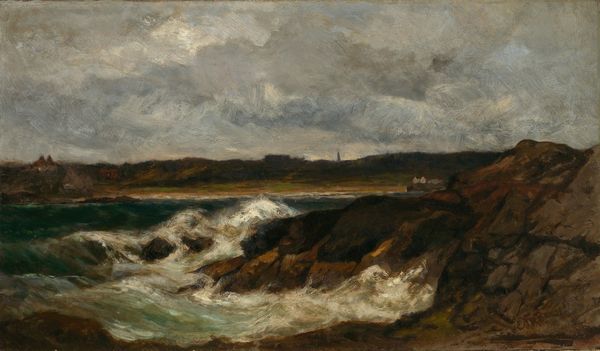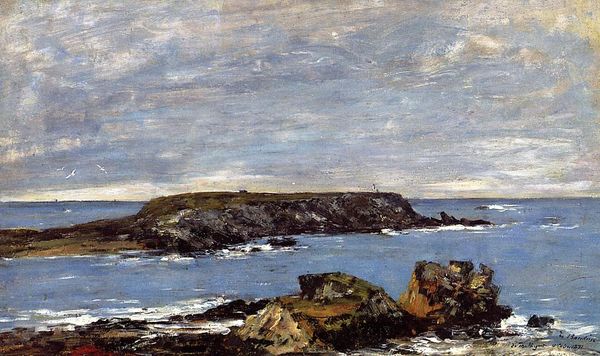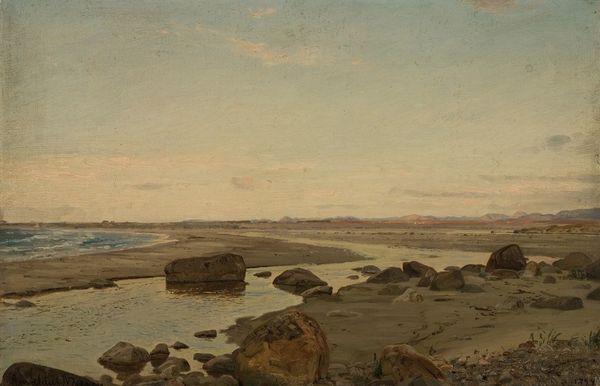
painting, plein-air, oil-paint
#
painting
#
impressionism
#
plein-air
#
oil-paint
#
landscape
#
impressionist landscape
#
oil painting
#
realism
Copyright: Public domain
Editor: Here we have Kitty Lange Kielland’s “View over the Sea from Ogna, Jæren,” an oil on canvas from 1878. It's remarkably stark; those looming rocks feel ancient and imposing. How do you interpret this landscape? Curator: I see a powerful invocation of nature's enduring presence. Consider the recurring motif of the rocky coastline in Nordic art – it becomes a symbol of resilience, a collective memory etched in stone. How might this painting speak to Norway’s cultural identity? Editor: I hadn't thought about it in terms of national identity. So, the rocks aren't just rocks, they're a symbol? Curator: Precisely. Each boulder, each wave, carries a weight of cultural significance. These forms echo in folklore, in sagas – they’re visual anchors to a shared past. Note the restrained palette; what emotions does that evoke for you? Editor: Melancholy, definitely. And maybe a sense of solitude. Curator: Perhaps that's a reflection of the period too – a burgeoning sense of national romanticism tempered by the realities of a changing world. The landscape becomes a stage for projecting inner states, individual and collective. How does Kielland use light to enhance this effect? Editor: It seems subdued, almost somber. Highlighting the rocks and waves more than the sky. Curator: Notice how that light isolates certain forms, turning them into almost totemic objects. This isn't just a depiction of a place; it’s a meditation on time, memory, and the enduring power of the natural world. Editor: It’s amazing how much meaning can be layered into something that, at first glance, just seemed like a straightforward landscape. I see the landscape with new eyes. Curator: Indeed! And with those new eyes, what new stories will you discover embedded within it?
Comments
No comments
Be the first to comment and join the conversation on the ultimate creative platform.
